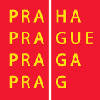Speaker
Description
The LHC-forward (LHCf) experiment is dedicated to the measurement of the very forward neutral particle production cross section in proton-proton and proton-lead collisions at the Large Hadron Collider at CERN. The experiment employs two independent detectors, named Arm1 and Arm2, which are placed on opposite sides along the beam line approximately 140 meters away from the interaction point of the ATLAS experiment. Both detectors are composed of two sampling calorimeters. Each calorimeter employs 16 Gd$_2$SiO$_5$ (GSO) scintillator layers alternated with tungsten layers. The transverse impact position of the incident particle is measured with GSO bars in Arm1 and silicon micro-strip detectors in Arm2. The experiment can measure particles with pseudorapidity greater than 8.4, up to zero-degree.
The measurement of the very forward secondary particles produced in high energy hadronic collisions is strictly correlated with the study of the ultra-high-energy cosmic rays (UHECRs). Since UHECRs can only be measured with ground-based experiments, detailed Monte Carlo simulations of the shower of secondary particles produced by the interaction of the primary cosmic ray with the atmosphere (the so called “air-showers”) must be employed. Most of the energy flow of an air-shower is concentrated in the very-forward region where soft quantum chromodynamics processes dominate, so phenomenological hadronic interaction models must be used in the simulations. The discrepancy between the predictions of different models gives the main contribution to the uncertainty on the measurements of UHECRs spectrum and mass composition. The tuning of hadronic interaction models in the very-forward region with data of accelerator experiments can therefore reduce the systematic uncertainty of UHECRs measurements.
In this contribution the LHCf main physics results from the Run II of LHC will be presented. At first, the results on photon and neutron production cross section in p-p collisions at 13 TeV will be shown. The comparison of the experimental data with some of the commonly used hadronic interaction models (DPMJET, EPOS, PYTHIA, QGSJET and SIBYLL) will be also discussed. Then, the motivation of the combined analysis of LHCf with the ATLAS experiment will be explained. In particular, the number of tracks recorded in ATLAS central detectors are used to discriminate low-mass diffraction interactions. The preliminary results of LHCf-ATLAS combined photon analysis will then be presented and compared with models predictions. Finally, the first preliminary results of π0 transverse momentum spectrum in proton-proton collisions at 13 TeV will be shown.
Even if there is not a single hadronic interaction model with a good agreement with data in the whole energy and pseudorapidity range, measured data lie mostly between models predictions. The tuning of hadronic interaction models using the experimental data from accelerator experiments, in particular in the very-forward region, can improve the precision of the Monte Carlo simulations and reduce the discrepancy between different models.
